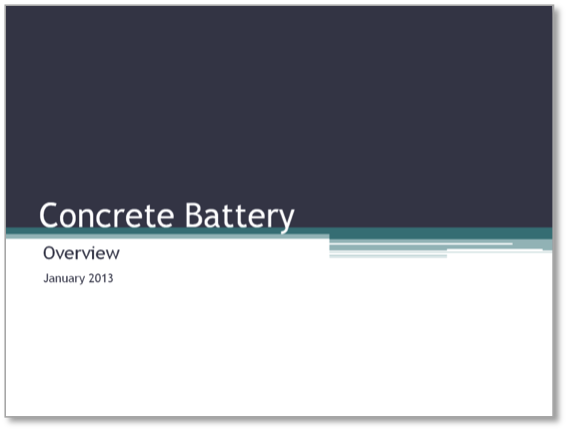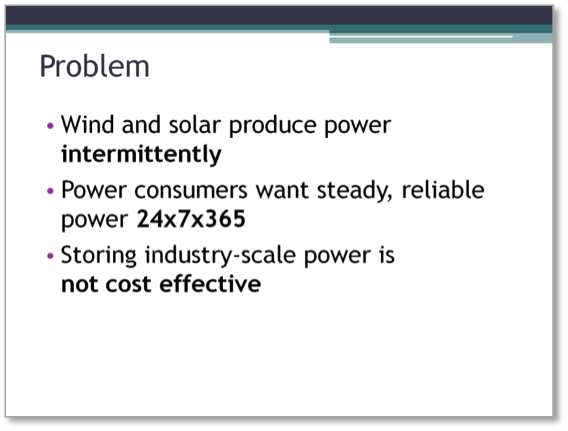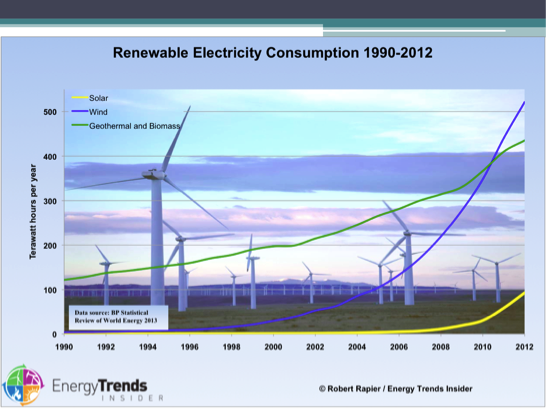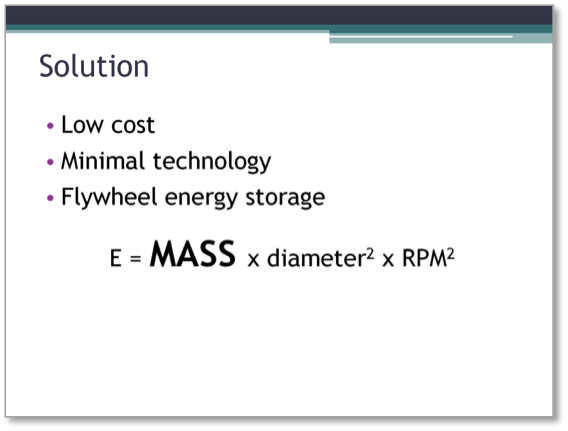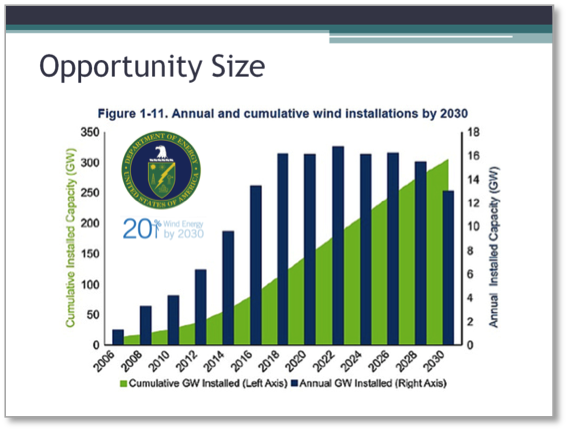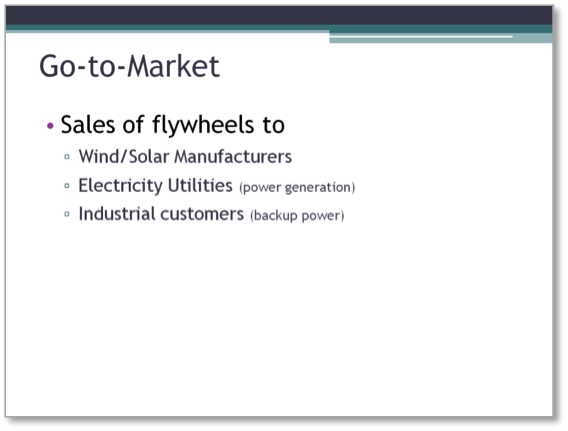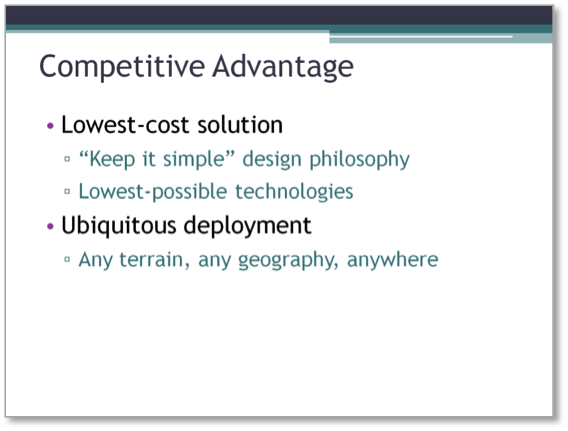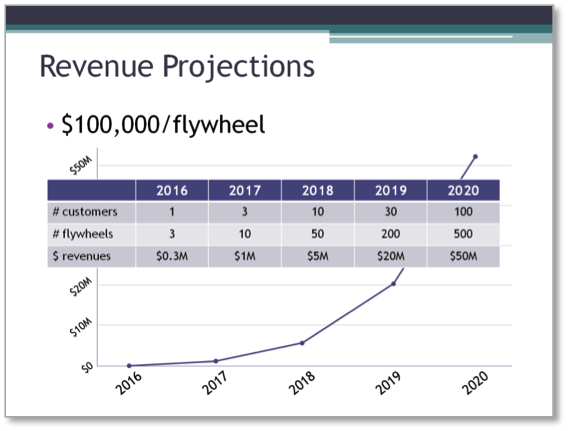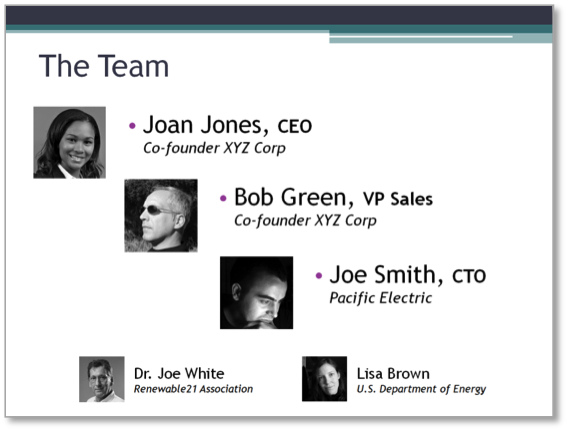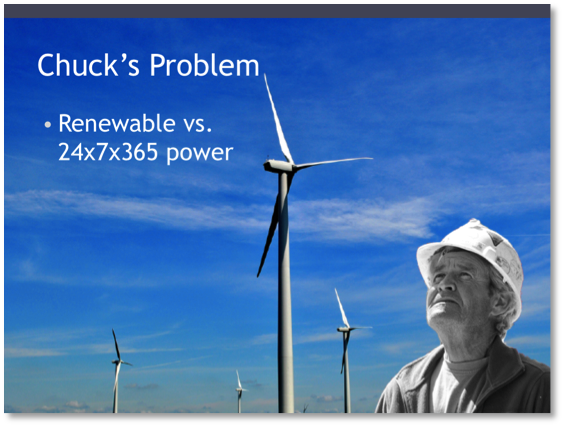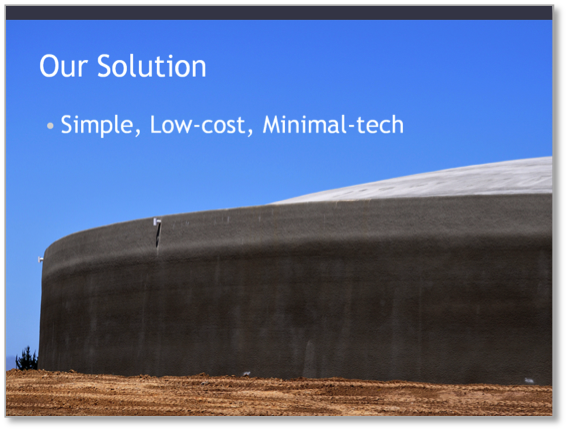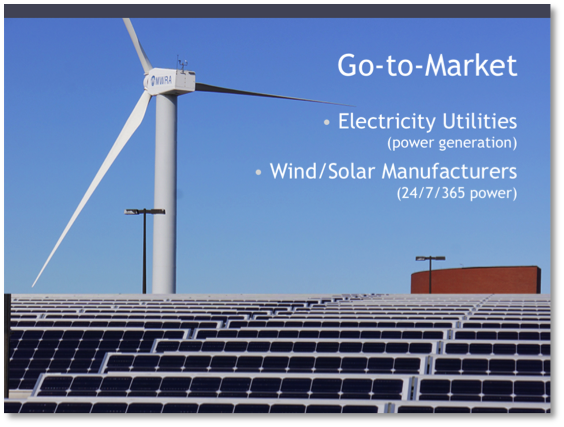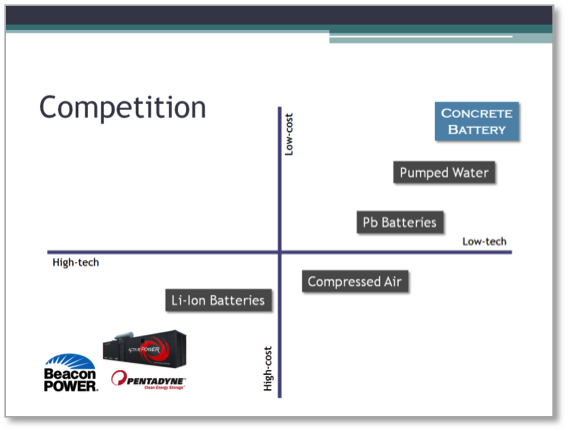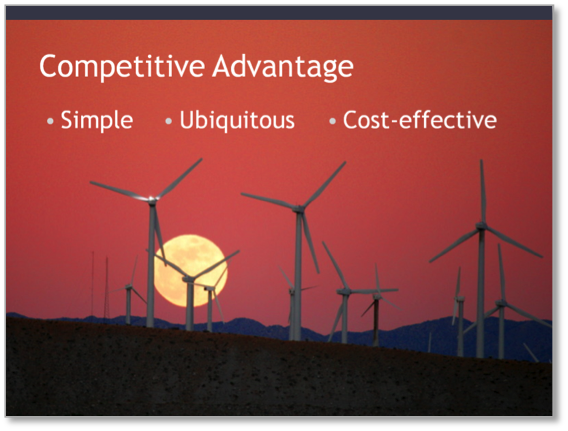Concrete Battery – Just the facts
“Hello. Thank you for inviting me to present today. My name is Michael Libes, and I’m here to tell you about Concrete Battery: Energy storage at industrial-scale that is simple and cost-effective.”
“More and more energy generation is via wind and solar. While using renewable energy is good for the planet, the problem is that these sources are intermittent, while consumers continue to demand a reliable, 24 by 7 by 365 supply. No good solutions currently exist to address this problem.”
“By 2050, it is predicted that up to 80% of the electricity in the United States will be supplied by wind, solar, and other renewable sources. However, even the experts at the Consumer Energy Report question this, as wind is expected to be the major source of generation, and the wind simply does not blow whenever consumers switch on their lights.”
“Concrete Battery provides a low-cost, minimal-tech, flywheel-based solution to store electricity during times of excess generation, and to release the stored energy instantly when needed. The low-cost target is achieved by focusing on the mass of the flywheel rather than the velocity, foregoing the expense of high-technology solutions such as air bearings, vacuum containment, carbon fiber construction, and hardened steel enclosures. Instead, the Concrete Battery flywheels are constructed out of concrete, use off-the-shelf bearings, and are buried in the ground, using the ground as the containment vessel in case of ‘unintended deconstruction’ (an important issue in flywheel storage).”
“According to the US Department of Energy, by 2030, as much as 20% of all electricity in the US will be generated by wind power. That is seven times the number of generators installed to-date. All of these wind generates will provide intermittent power, in need of backup generators running on fossil-fuels or better yet, storage solutions. At the price per gigawatt quoted in ‘T. Boone Pickens’ 2009 ‘Pickens Plan’, the new generators will cost a total of $750 billion to install. That does not include any backup generators. If 5% of that total is spent instead on storage, the market opportunity for storage is $37 billion. If that estimate is too high by a factor of ten, (that is, if just half of 1% is spent on storage) the opportunity is still almost $4 billion.”
“The customers of Concrete Battery come from three sources. First, we sell flywheels to the manufacturers of wind generators and solar panels. By adding storage, their products can better compete with fossil fuel generators, as the renewable solutions can better provide a steady, reliable stream of power. Second, we sell directly to the utilities that generate electricity, so they can put the storage within their networks, across the multiple renewable installations. Third, we sell directly to big industrial power uses, who today use backup generators to ensure the reliability of their power from the grid.”
“Three other companies have industrial-scale flywheel products in the market. All of their solutions use high-tech, high-cost processes to maximize the energy storage in a minimal amount of space. By optimizing for volume, and by using high-tech solutions, their costs are too high for wide-scale adoption. In addition, many researchers are testing other electricity storage options, such as storage of compressed air, hydrogen generation, and batteries. None of these have more than a few trial customers, and none are on track to be a lower-cost option to Concrete Battery’s solution.”
“Having the lowest-cost solution will allow Concrete Battery to gain initial sales, grow in scale, and use that success to further lower the costs of production. Patents will be filed on all key early learnings, further protecting the market share, and building a barrier to competitors following in our footsteps, even more so to those competitors that require specific geographic features, such as hydroelectric plants for or salt domes. As the market grows in alternative energy production, Concrete Battery will be poised to grow along with it, as a proven, trusted, affordable brand for energy storage.”
“Sales are projected to grow from 3 to 10 to 50 flywheels in the first three years, growing revenues to $5 million in that third year. Expenses grow in step, breaking even in year 3 with a $X million profit. Total cash required to meet these projections is calculated at $3 million.”
“The Concrete Battery team is well experienced in renewable energy. Our CEO, Joan Jones and VP Sales Bob Green founded and grew XYZ Corporation from the two of them to over $25 million in annual sales in five years, before selling XYZ to GE in 2010. Our CTO, Joe Smith joins us from Pacific Electric, where he managed the technology in their Solar and Wind division. Advising Joan Bob, and Joe are a few luminaries in the renewable industry, including Dr. Joe White, Chairman of the Renewable21 Energy Association, and Lisa Brown of the U.S. Department of Energy.”
“To fund our growth plans for this year, Concrete Battery is raising $5 million. $2 million is already committed, and we are asking you to join in this unique opportunity to finish off the current round of financing.”
“That is all the time we have for questions today. Once again, I am Michael Libes with Concrete Battery, a simple, cost-effective solution for industrial-scale energy storage. Thank you.”
Concrete Battery – As a Story
“Hello. Thank you for inviting me to present today. My name is Michael Libes, and I’m here to tell you about Concrete Battery: Energy storage at industrial-scale that is simple and cost-effective.”
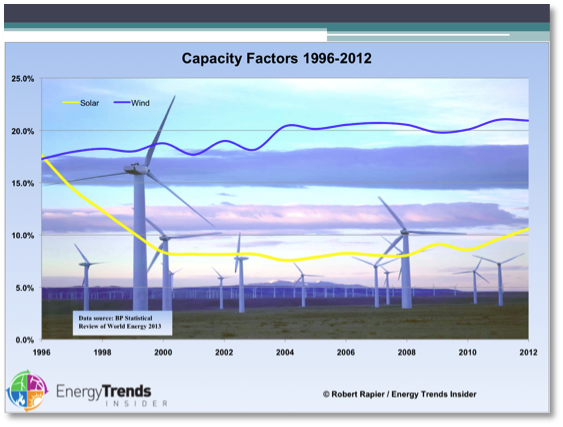
“In the last twenty years, generation of electricity from wind and solar have grown from almost nothing to multiple hundreds of terawatt hours per year.”
“However, even the experts at the Energy Trends Insider question this continued growth rate, as those wind turbines are producing only 20% of their capacity, and solar panels at 10% of their capacity.”
“This is a big problem for Chuck. At City Power, he’s in charge of installing the mandated renewable generation, and yet his customers demand power when even at night, even when no wind blows. If only he could store electricity on sunny, windy days, his life would be far easier.”
“Concrete Battery can solve Chuck’s problem with a minimal-tech solution, using a low-cost, flywheel. With a few flywheels, City Power can store excess electricity from the windmills whenever the wind is strong, and from the solar panels whenever on days when the sky is clear. <pause> The breakthrough to make this cost-effective is a focus on a simple, large, heavy flywheel, constructed from low-cost concrete, buried in the ground for safety… foregoing the typical solutions that use carbon fiber, magnetic bearings, hardened steel enclosures and other costly high-tech components.”
“According to the US Department of Energy, by 2030, as much as 20% of all electricity in the US will be generated by wind power. That is seven times the number of generators installed to-date. All of these wind generates will provide intermittent power, in need of backup generators running on fossil-fuels or better yet, storage solutions. At the price per gigawatt quoted in ‘T. Boone Pickens’ 2009 ‘Pickens Plan’, the new generators will cost a total of $750 billion to install. That does not include any backup generators. If 5% of that total is spent instead on storage, the market opportunity for storage is $37 billion. If that estimate is too high by a factor of ten, (that is, if just half of 1% is spent on storage) the opportunity is still almost $4 billion.”
“The customers of Concrete Battery come from two sources. First, we sell flywheels to all the Chuck’s at all the utilities which have renewable power installed today. Second, we sell directly to the manufacturers of wind generators and solar panels. By adding storage, their products can better compete with fossil fuel generators, with power available when its needed by customers, no matter the sun or weather.”
“Three other companies have industrial-scale flywheel products in the market. All of their solutions use high-tech, high-cost processes to maximize the energy storage in a minimal amount of space. By optimizing for volume, and by using high-tech solutions, their costs are too high for wide-scale adoption. The only competition with wide-scale adoption is pumped water at hydroelectric plants, but that solution works only in locations with existing hydro facilities. Other technologies are being researched, such as storage of compressed air within salt domes and batteries of various chemistries. None of these have more than a few trial customers, and none are on track to be a lower-cost option to Concrete Battery’s solution.”
“Focusing on a simple, low-cost, cost-effective solution will allow Concrete Battery to gain initial sales, grow in scale, and use that success to further lower the costs of production. Having a solution that can be installed anywhere, will help Concrete Battery compete against other technologies. Patents will be filed on all key early learnings, further protecting the market share, and building a barrier to competitors following in our footsteps. And as the market grows in alternative energy production, Concrete Battery will be poised to grow along with it, as a proven, trusted, affordable brand for energy storage.”
“Sales are projected to grow from 3 to 10 to 50 flywheels in the first three years, growing revenues to $5 million in that third year. Expenses grow in step, breaking even in year 3 with a $X million profit. Total cash required to meet these projections is calculated at $3 million.”
“The Concrete Battery team is well experienced in renewable energy. Our CEO, Joan Jones and VP Sales Bob Green founded and grew XYZ Corporation from the two of them to over $25 million in annual sales in five years, before selling XYZ to GE in 2010. Our CTO, Joe Smith joins us from Pacific Electric, where he managed the technology in their Solar and Wind division. Advising Joan Bob, and Joe are a few luminaries in the renewable industry, including Dr. Joe White, Chairman of the Renewable21 Energy Association, and Lisa Brown of the U.S. Department of Energy.”
“To fund our growth plans for this year, Concrete Battery is raising $5 million. $2 million is already committed, and we are asking you to join in this unique opportunity to finish off the current round of financing.”
“That is all the time we have for questions today. Once again, I am Michael Libes with Concrete Battery, a simple, cost-effective solution for industrial-scale energy storage. Thank you.”

